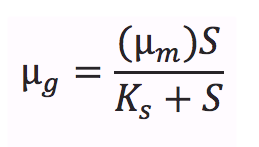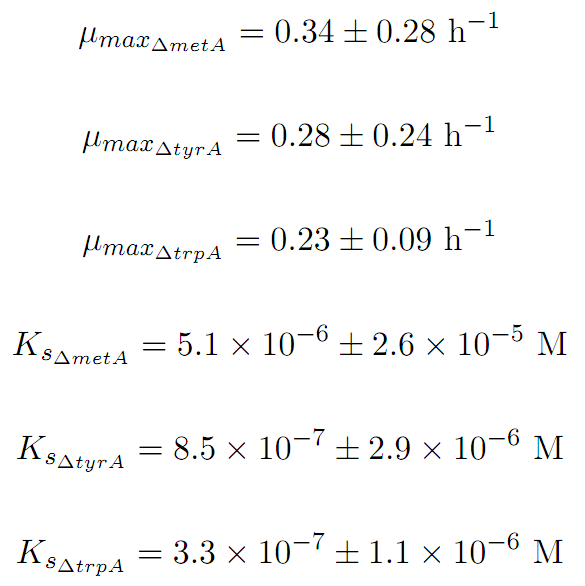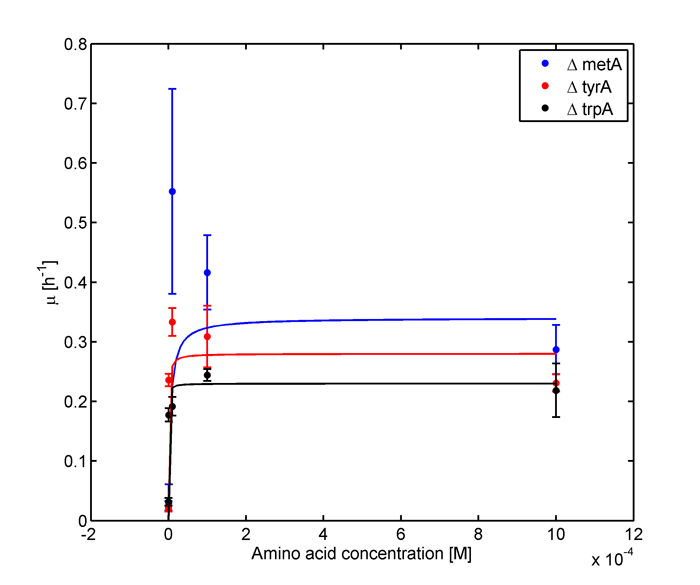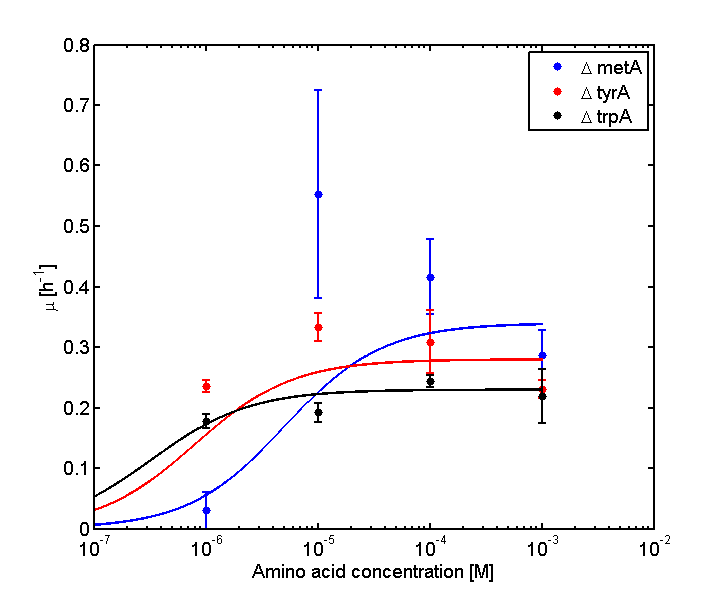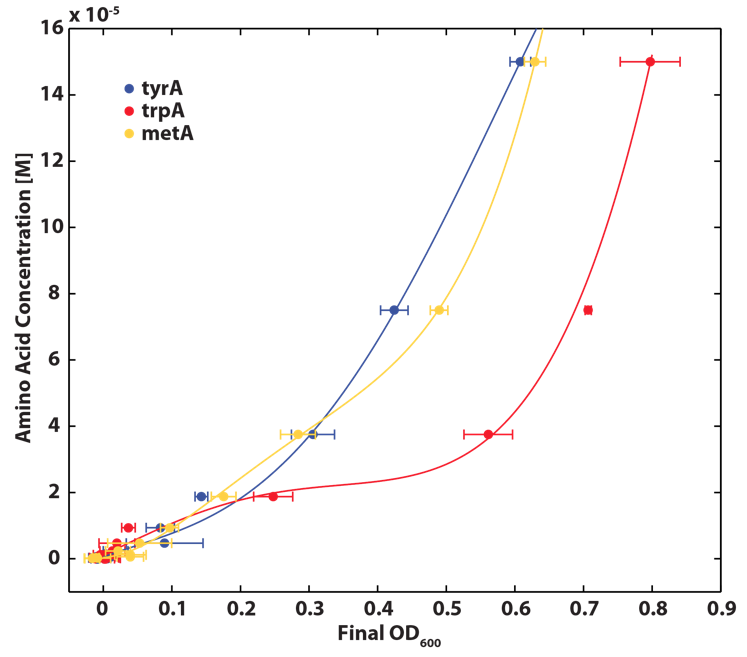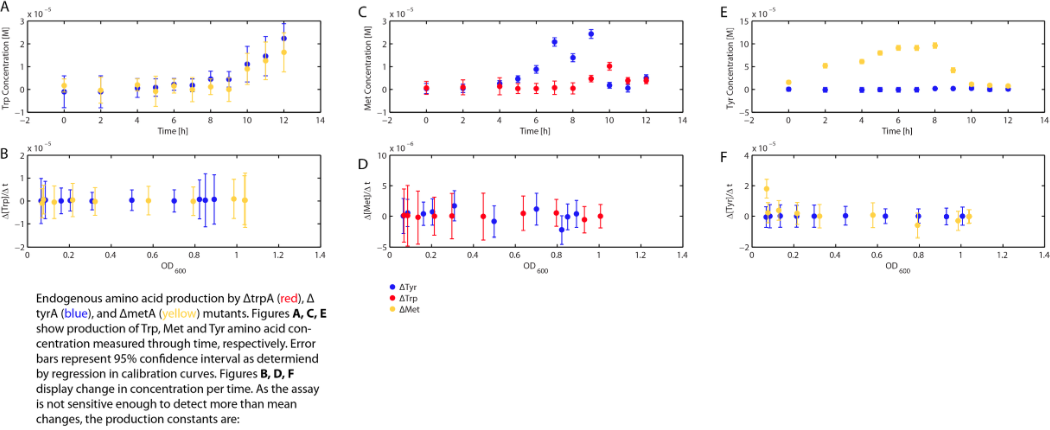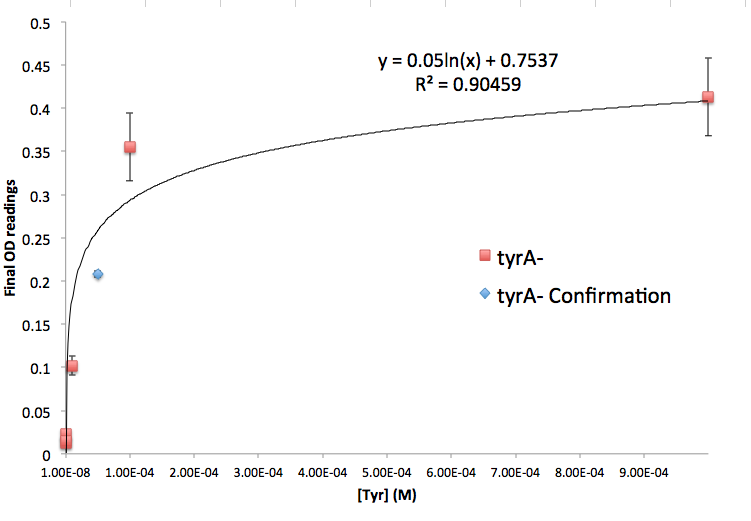Team:British Columbia/Consortia
From 2012.igem.org

Description:
The three interdependent E. coli auxotrophs studied in our project are ΔmetA, ΔtrpA, and ΔtyrA. In order to motivate how to set up our co-culture experiments, we wanted to model the population dynamics
This model is designed to predict the consortium’s population dynamics, based on the measured amino acid excretion rates without tuning them. However, the code of the model is written in a way that when we decide to tune the population by adding in different concentrations of inducers, we can simply update the excretion and consumption rate equations. Thus this model is valid for both situations. It can even be generalized to be used by any interdependent ecoli consortium when Met, Trp, and Tyr are the limiting nutrients/substrates for their growth, with some modifications.
The key assumption for this model is that the Methionine, Tryptophan, and Tyrosine are the only growth limiting substrates for MetA-, TrpA-, and TryA- Ecoli knock outs respectively.
Monod equation is the most commonly used model for microbial growth and it can reasonably fit a large variety of data empirically[1]. Also, it shares the key assumption described above. Thus it is decided to be one of the fundamental governing equations for this model.
For those who are not so familiar with the Monod equation, its key equation states like this:
where µm is the maximum specific growth rate, S is the limiting substrate concentration, and Ks is the concentration of the limiting substrate when the specific growth rate is half of the maximum (Ks=S when µg=1/2µm) [1]. Ks has the name of saturation constant or half-velocity constant[1].
Equations:
Constants:
Some of the key constants for the Monod Kinetics are obtained through analyzing various growth rates under different known amino acid concentrations. The values are listed as follows:
and its wet lab data used is mainly based on the following graphs:
"Comment to Alina: How to size the pic with frames?' -RX
Also, we assumed that the amino acid consumption is solely depended on the cell growth and not the cell self maintenance. thus they are also obtained directly using our own wet lab data for these specific Ecoli. We grew MetA-, TrpA-, and TryA- Ecoli knock outs in 50 ml flasks with known initial Methionine, Tryptophan, and Tyrosine concentrations (5E-5 M) respectively, and harvested 5ml of cell free supernatants at various ODs. All these supernatants served as new media for each knock out cultures with newly added M9-Glucose shots, which made sure the Amino Acid will be the limiting substrate for all knock outs. (Through previous experiments, we found that the each of the knockout mono cultures will reach to a certain final OD, with respect to the media amino acid concentrations, thus we generated a calibration curve to relate the limiting amino acid concentration to their final OD readings.) These calibration curves are shown below:
Note: We also tested the accuracy of one of the calibration curves. The blue dot is another data value we obtained later at a known amino acid concentration of 5E-5 M, and it is reasonably close to the predicted curve.
and Paper-_________________ also proved that this technique could be used for this purpose.
to grew in 96 welled plates
.
Matlab Code
References
[1] Shuler, ML; Kargi, F; Bioprocess Engineering Basic Concepts, 2002 2nd edition. Prentice Hall PTR.
 "
"
